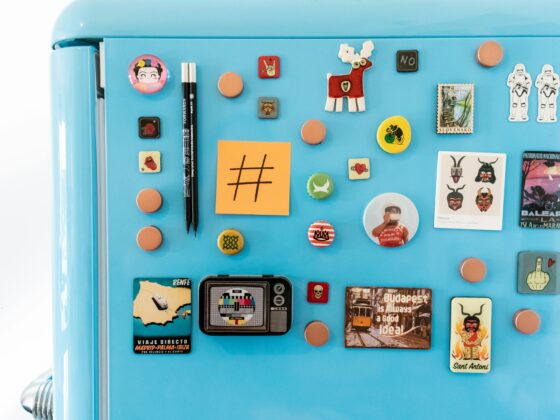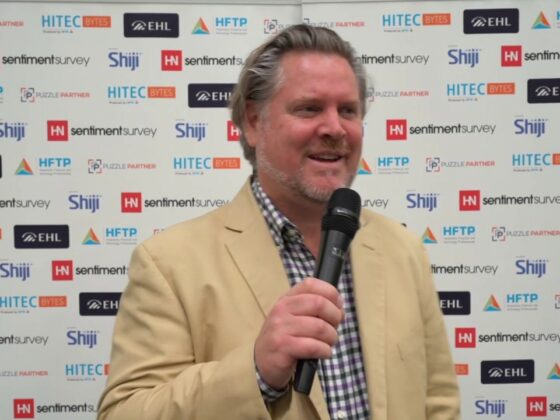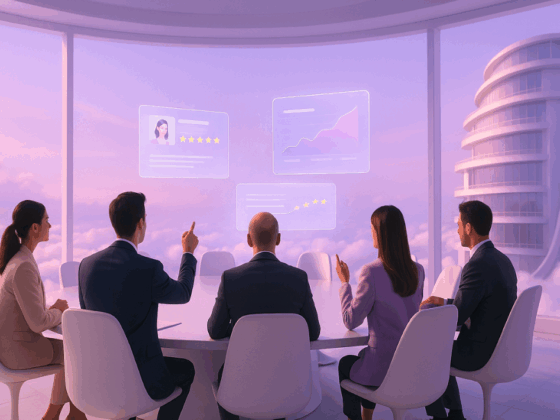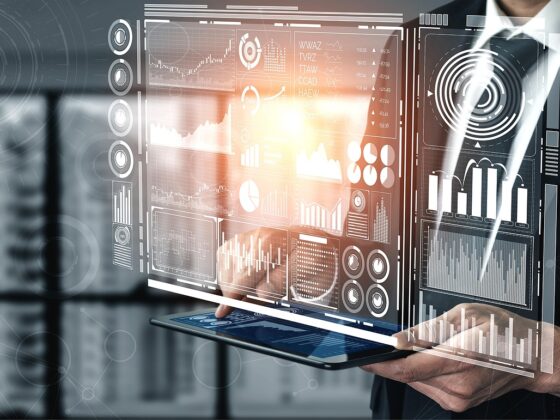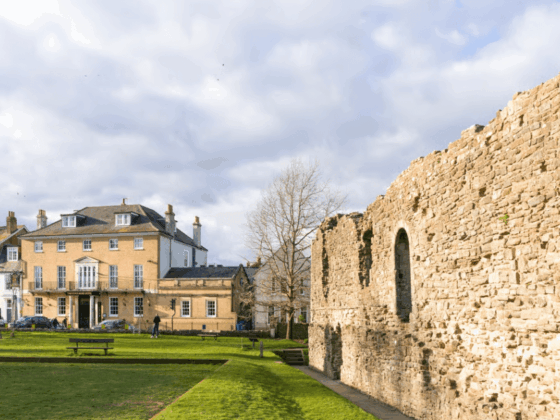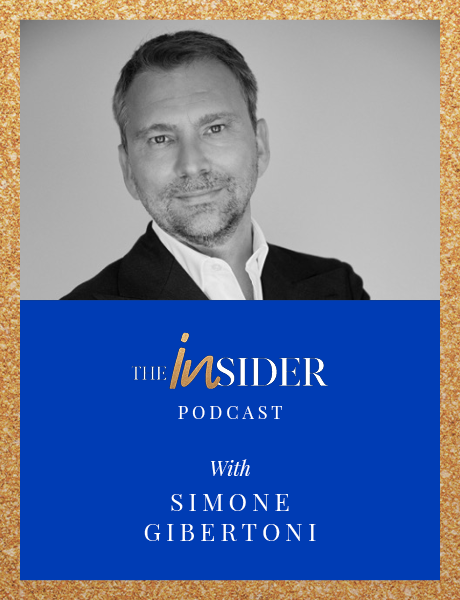
Simone Gibertoni, welcome to The Insider Podcast.
Thank you, Martin. So nice to be here with you.
Now, a lot of what we’re going to talk about is about longevity. And I want to start with an examination of that. I think, anyone you’d ask would say they’d want to live longer if they got the choice. But I guess the more important question perhaps is the quality of that life and making the most of that extra time. Is that a position you recognize and is that something that drives your mission here?
Absolutely, absolutely. I will say this is the primary focus of what we do. It is not extending life, but is about living the years that we have available in the best way possible. By the way, did you know we are living on average, if you take the world population, seven years with some disease, which are impacting our ability to live a full life? So if you would already be able to work on these seven years and improve these seven years, our life would be so much better.
And this is what we plan to do here at the with our technology. And then why not extending also life? Because first, there is what is called the ‘healthspan’, which is what we are talking about, but then, of course, why not increasing the years that we have available with the ‘lifespan’?
So it’s both. But that said, we’re in, at the moment, quite an extraordinary situation in that our life expectancy, having grown substantially in past years, is kind of flatlining or even potentially falling in some pretty developed countries, notably the United States. Why do you think this is happening at a societal level? What can we do about it?
Yes, true. And not only the United States, even the UK, if you take even countries like Spain, Italy, and it is not only the Covid, because if you look at the last three years, the statistics, of course, are very much impacted by Covid. But not only this, I think if you want to get at the roots of what’s happening, there is this big difference between giving strategy to people and changing behavior. And I think we have been used to get a lot of information about how we should live in the right way.
So everybody knows that we should walk more. Now the famous 10,000 steps. We should eat more salad, and we should sleep better. The question is why we don’t do it. So the point even if you run a clinic like our clinic is not only to give strategies, not only to educate people, but at the end the point is to change people. I mean we could talk hours about this, but the question is how do you introduce in your lifestyle routines which are able to change your life in the long term; because this is the point to have, change behavior in the longer term. This is what is a reality affecting our ability to live better. But this is difficult, of course, and that’s why you see in terms of nutrition, in terms of movement like you were saying the result of this flattening line is due to the fact that we are not following the things that in fact we know. The mind is absolutely key here and behavior is absolutely crucial to this.
Now, for the past 90 years, a large number of people have put their faith in Clinique La Prairie to help them live longer and more healthily as you’ve put it. Now 90 years is a long time, and I know there’s a lot of history to this place. I’ve even had a little bit of a look around myself this morning, but how’s the nature of what you offer here evolved over that period of time?
Yes, that’s a very good question. Also you know, company wise when you are running a company which is almost one hundred years old you have always to ask yourself what do I need to keep, what is the soul of the company, which are the brand pillars of the company that I need to keep? And what do I need to build to create the future of the company?
And to answer to your question, I think here there is this idea, there are a few points which have been important for the clinic in the past, has made the clinic what the name, the famous name that is today; and still for us are very important. First of all is our pioneer soul, this idea of being pioneering in what we do, always. Dr. Niehans, who founded the clinic, was the inventor of the cellular therapy. So he really created this new technology. In fact, it was at that time injecting stem cells, and we know today, he didn’t know at that time, but we know today that it was a super innovative therapy at the time.
And then there is this idea of caring about people. And this is also part of our, again, I call it soul. It’s really part of what we do. And this idea of always putting ourselves in the position of helping people. And you know, we were talking before about strategy and education. I always say you need human to change human, and for us this human part is super important to the people which come to a place like this. They’re not searching anymore for the most beautiful room or the most beautiful view on the lake – of course this is very important – but what they are chasing is really unique technology, what we’re saying before the innovation and the philosophy but also the people, the right people.
When you are in a spa – let me make you a simple example – when you are getting a massage you forget about the fact that the spa may have cost 200 million, and is beautiful. Experiencing the therapist and when you are leaving the spa and thinking this was the best massage I’ve ever got. And it’s not because of the real estate where you are or the location where you are; it’s because of the people.
And it is only not only valid for the spa, it’s valid for the nurses, valid for us, for the doctors. We have here in Montreux over 50 doctors and you want to have the best doctor because you want that the clients are coming from New York or from Shanghai to the clinic, is finding a doctor which is better than the doctor that he is having at home; a doctor which is able to connect all the dots and, as we said again, changing the life of our clients.
And of those clients, is there a typical profile, is there like a typical CLP client? Or does everyone come with their own unique challenges and desires?
That’s a very good question. First of all, we have clients from 80 different countries. So we have clients really from all over the world. And this is of course, in terms of culture, as you can imagine, is amazing. Each of them is different. And this is also reflecting what we know about longevity. Superficially, we are all the same, but in reality, we’re all of us very different. And I think you come to a place like Clinique La Prairie, we call it a Longevity Clinic, because you want the hyper-personalization of the therapies that we do.
There is a process which I’m always using to simplify the process of what we do in a longevity clinic, which is made of three very simple steps. Diagnostic, intervention, and follow-up. The first step is diagnostic, is understanding the way your body works. Only once we have understood the way your body works through genetic, epigenetic, glycans, metabolomics, we are able to customize the right intervention for you. And then there is the follow-up. We see the result and we continue to fine tune this circle. So you see the circle of longevity is proving that each of us is different and we need to have this hyper personalized intervention… and this is why, by the way Martin, all our locations are very small number of clients. We just opened a beautiful, fantastic location in China. And we have just twenty nine rooms and again like here you have a fully-fledged medical hospital; you have doctors, you have nurses, you have over one hundred fifty members of staff, but they are serving just a very small number of clients. It is the only way to assure personalization.
And here in Montreux, in Clarens, what’s the typical client number for this facility?
Here we have only 34 rooms, so I would say maximum 50 clients. We have 300 people on staff. We have 50 doctors. We have over 30 medical practices. So even here what is very important for us is the personalization of the service.
Obviously for us at Glion, coming from a hospitality school, you mentioned obviously the medical intervention is all important, but there is a hospitality angle, I think as well. I mean, looking at the facility, it has the kind of feeling of a very, very smart hotel. How important is it to have good hospitality as well as good treatment for you?
Absolutely. That’s very important. I would say here, Martin, we are in the intersection of three different industries. There is the medical technology. Which you saw probably passing by the hospital. So there is this medical part. Then there is the hospitality, which is very important for us, and I’m going to deep dive later on this point on your question. And then there is the luxury part in a sense that, of course, all of this has to be inside a very personalized… which is what is luxury for me at the end is a very personalized experience.
So to come back to your question, hospitality is very important. Of course, when you come here, you want to have the top level of hospitality. Then of course hospitality for us is a little bit different than for a traditional hotel, you know. I call it the French fries problem that we have here. Let me explain to you what I mean. You know, what is a good GM of a top hotel doing? Serving the client. So when a client is calling four o’clock in the morning, dear GM, I’m hungry, please bring me French fries because I want to eat French fries. What is a good GM of the top five-star hotel immediately doing? Even if it’s four in the morning, there are beautiful French fries delivered to the room. Here, imagine what’s happening after three days that you’re having detoxing just drinking the juice, you call the GM of the hotel and you say, I want French fries. I cannot have juice anymore! But here you cannot deliver the French fries, right? So here the hospitality part is from one side serving the client, but is serving something which is even more than the immediate satisfaction of the client, which is the long term efficacy of what we want to deliver in our place.
So at the end you know I’m always saying if you run a place like our place, you can have a person that is satisfied of the week but this doesn’t get results, so he is leaving the place happy but doesn’t come back. What you want is to build a week in our case, because clients are staying here minimum one week, where you deliver results at the end of the week.
I suppose in a way, it’s also the result of more traditional hospitality to get people to come back. So I guess your ultimate ambitions are the same.
The ambition is the same but in different ways, exactly.
Interesting. Now, just turning back to the treatment, I want to talk particularly about epigenetics in a little bit more detail in a moment. But across the 90 years, and I know that this facility has built and expanded and added more medical facilities over the years, but how much more would you say we know about the functioning of the human body today, than perhaps was the case when this institution was founded 90 years ago? Is it significantly more?
Of course a lot a lot more. And let me transition then to your question about the genetic, because if you ask me which has been the biggest innovation in longevity it’s not really a technology, but it’s this understanding that epigenetic is more important than genetic. Epigenetic is the way we express our gene. Why genetic is the same, because it’s taking a photograph of your gene. So if I take a genetic test of you today, in ten years the test is obviously the same.
Epigenetic is the way you express your gene; and today we know that lifestyle epigenetic is much more important than genetic. Last week, by the way, came out a new study in Nature, done in the UK on a very big number of patients, which is proving again how important is lifestyle for our epigenetic expression. Why I say this has been a revolution? Because it makes us understand that there is a lot that we can do for our health.
And you know this has been one of the key points, for example, of Covid. There is nothing good out of Covid of course, but people understood that we could do something about our lifestyle and it brought a lot of terms related to longevity to the forefront. Like, for example, immune system, you know, I was experiencing a bit before Covid, nobody knew what was the immune system. After Covid, everybody knows! But again, its understanding this is not what my parents gave to me. There is a lot that I can do for my health.
Epigenetics – for the benefit of the layman listener and myself who is also a layman in this. I mean is it something you’d test for? Give us a sort of a, just a real idiot’s guide to what epigenetics actually is and how you guys use it here.
Absolutely. But first of all, let me again explain maybe even in a simpler way what is epigenetic, because I have personally twins. Okay. So it’s the best way to make people understand what is epigenetic, right? If you take twins, the genes are the same, right. So the genetic is the same. Imagine that one of my twins is eating salad, and always doing movement and no stress. And the other one, French fries and McDonald’s and super stress. Despite the genetics being the same, as you can imagine, they are going to age in a very different way. So this is a way to explain to you that their genetic is same, but the expression of their epigenetic is going to be different, right?
So the question is how do we measure? There are tests, and we’ve been the first in the world to do an epigenetic test by the way, it is done with a lab that is not far from here in the University of Lausanne. And again these tests are analyzing how there are a lot of biomarkers they are analyzing your lifestyle is affecting the expression of your genes. So it’s a way to get what we call biological age. So you have a chronological age and we try to understand if your lifestyle is making you age faster or slower compared to your chronological edge.
And I think this is something that every client that has done now, as part of their treatment?
Absolutely. It’s part of the treatment and it’s part of this first step of the three steps that was mentioned to you: it is part of the diagnostic. Now there are epigenetic tests. There are other tests which are very sophisticated. The idea is again, to understand your level of inflammation. There are the traditional blood tests. Of course we come up with hundreds of different markers. And there is today, some help that we have also to interpret all these different data, which is artificial intelligence. Maybe if you like, we can elaborate about this later, but the idea is to have all this diagnostic to understand how we can fine-tune the best intervention.
This is a good opportunity to perhaps to talk about the impact of technology, AI, I mean, people are now familiar with how that’s being brought into all manner of fields, but it’s clearly having an influence on your field as well. Is it just the power of analysis that it’s bringing to you or are there other benefits as well that technology is bringing?
Let’s say for us, the way we are using it today is very much focused on the medical part and as a tool for the doctor. So there are of course a lot of tools now on artificial intelligence. For example, in the part which is related to radiology, to imaging, as you can imagine, artificial intelligence can analyze millions of images and so is able to analyze much better than a doctor from this point of view.
But then I was telling you about all these markers. Imagine that you have done your genetic, epigenetic, blood test, you have all these markers. Artificial intelligence is able to connect all these different dots and see the relationship between all these different markers and help the doctor to make the right diagnostic for the clients. And then of course, there is another more practical use that we do, which is how do we communicate all these different tests in a meaningful way for the customer – and when you have just one week and you want to do all the tests in the same week for us is very important, for example, in genetic and epigenetic tests to deliver the test during the week, of course is to put together all these data and to make a meaningful report for the client, because maybe we can discuss it later. What is very important is what do you do after? What do you once you leave the clinic?
So it’s not just speed but also accuracy of diagnosis basically. Now, I certainly don’t want you to give away any trade secrets about treatments on offer here, but perhaps just to talk in general terms, how much of what you do here is connected to the physical and how much is connected to the mental?
That’s a very good question because you let me introduce a concept which is very important for us, which is this idea of holistic intervention. So we said diagnostic, we understood the way your body is working, and then there is the intervention. What do we do with this information? And we believe that we will not find the magic pill which is going to solve all our problems. So the interventions must be holistic.
We call it the four pillars of our intervention. The first pillar is medical, very important, as we were discussing before. But it is not only the medical part, there is also the nutrition part. That’s why when you come here, you have nutritionists. We have 30 people in the kitchen for just, as I was telling you, 40 guests. There is this part where we really understand what is the right nutrition for you. Then there is the wellbeing part which is our third pillar and inside the wellbeing there is the mental health because stress it’s a very important factor for inflammation and as you know inflammation is what makes us aging at the end.
And then the last which is the fourth pillar, is movement. So the way we move, and we have coaches which are specialized to analyze what is the best coaching for you to learn again how to move. This is to tell you that to answer to your question, you have to have both. You have to have the physical part and you have the mental part and you have a holistic approach in term of intervention.
And I guess it’s important to say with the nutrition, that is tailored nutrition to every client, basically. So it’s not just a kind of one size fits all approach.
Because again, superficially we are all the same, but we are very different.
Also, I’d imagine that the nature of this establishment and no doubt with the fees that you charge is that you’re going to get a lot of successful people here. And I guess successful people come with stress, generally. I mean, the higher you fly, you know, often the more difficult it is. I mean, is stress a big factor in a lot of people that come here?
Definitely, and a lot of these people, they want to function at the maximum level possible. So that’s why they come to us, because they want to perform at their better level. And of course, they know that coming here, they get the best and the most advanced technology. And you know, coming back to your question about what has been developed throughout the years, you know I think what’s been very useful for us was to have this idea of scouting all over the world, the best technology.
So we didn’t have since the beginning, one single philosophy. And you when you have a philosophy, which has been developed like 90 years ago, it’s difficult to stay valid today with all the development that we have. But our philosophy has always been to be very innovative. So this is what we are doing together. Today, we are going around and scouting the best technology. We are putting the technology in the pillar. We decided even to do a fund, which is going to invest in new technologies, called the Clinique La Prairie Longevity Fund. The idea always to bring to our customer the best technology.
And we’ll talk about the fund in a little bit, because I do want to explore that. That’s one of the bits of news over the last three or four months. But I want to touch on what happens after they have their amazing week here, they’ve had their diagnosis, they have had this incredibly nutritious food and lots and lots of amazing treatment. What happens next? How do you ensure that the good practices, the good habits, the good behavior that’s been learned here, hopefully, they take it through into the future.
First of all, as I was telling you, is you need to find a way to change people while they’re here. So every interaction, I repeat, you need human to change human. Every interaction is made to make you change. But then what you are saying about the follow-up, what do you do after you leave the clinic is super important. It was my obsession since I came here. For two reasons. First, a lot of people which are coming to a clinic like us, they have this mindset and they say, you know what? I do whatever I want throughout the year because I go one week to Clinique La Prairie. Which is not working like this, as you can imagine!
But then is how can I follow up with a client? So the idea of creating the hubs, creating physical places, was exactly going in the direction of what we can build to follow up the clients once the client has left Clinique La Prairie. Because the other problem which is happening is not only about the, if you want, the mindset of doing what I want the rest of the year but is that usually people are getting for example a very precise – you are mentioning it – the nutritional recommendation here and they go back to their home and they see another nutritionist because they want to follow up. They say, oh, I’ve learned fantastic stuff in Montreux in Switzerland. Now I want to continue and maybe the nutritionist that they find in New York or in London is telling them a completely different story. So we wanted to keep this coherence also in terms of the indication and the guidance for the customer. As you can imagine, when you go in our Longevity Hub in Dubai the people are training in Clinique La Prairie. Of course, they are telling you the same philosophy that you learn Clinique La Prairie and this is fantastic to create consistency in the long term.
Now, when we spoke, I think it was three years or so ago, the hubs, the international expansion, which you just touched on, was still relatively, I think, in its infancy. But I know that things have moved on quite a bit since then. Just give us an idea now what the international bandwidth, what the international footprint is of CLP in terms of the hubs that you’ve both opened and the ones that you’re planning?
Now we have five hubs in major cities. We have plans to open another two hubs in the next 12 months. We just opened, as I was mentioning, this big clinic in China, and we have another big clinic on the way to being open in Saudi Arabia, it’s going to be the biggest project ever done in longevity. A third clinic in Phuket, which with Montreux is going to be in fact the fourth clinic. And so we continue in the development that I was, in fact, with the first conversation we had with, probably we were having just one or two hubs.
So with the clinics, there’s almost like a sort of two tier approach. You’ve got clinics which are sort of all singing, all dancing, but then there are hubs. What are the key differences between those two?
The full clinics are places where you go and you can stay one week and usually are not of course in urban settings, because we believe that you need to be secluded – for the problem that I was telling you before, because after two or three days, otherwise you go to the restaurant nearby and you lose all the benefit of the program! While the longevity hubs, the urban clinics are in urban settings, smaller of course, and you can go for a day treatment, you can go for a few hours. The point of the urban clinics and what we call Longevity Hub by Clinique La Prairie is to create consistency. So the idea is that we want you to go there at least two or three times per week, to create this consistency. And so of course, that’s why they are in urban setting. And if you are able to be in 40 cities, we are covering basically 95% of our clients. That’s our aim in the long term.
Just to be with those clients on those journeys. And I imagine, I mean, without naming names, of course, but I imagine you’ve had some amazing success stories over the years of people who’ve really, really turned things around health-wise for them. That must give you a tremendous sense of satisfaction.
Absolutely. I have to tell you that this is an amazing business because there is a lot of meaning in what you do, because at the end, what is our mission? It’s helping and inspiring people to live a longer, healthier and better life. So that’s absolutely fantastic. And like you said, you know, there are many reasons why we are changing life. I think first of all, is because we have this deeper desire of doing it and all our people – and if you come here you will perceive it immediately – and people the main comment when they’re leaving is that really they found human beings which is this idea of caring.
But then of course imagine, you know, we are used to have different doctors, the doctors they are not talking to each other. And I know a lot of people coming here, even the very rich, they’ve never done a checkup. And when you come here you have all these doctors, all these tools, all these diagnostics, and of course in the long term this is very useful for our clients to change their trajectory of health.
This is a free speech podcast, so I want to wax philosophical just for a moment, if I may. Now, I think you’ve done a really good job of explaining how well grounded what the work that you do here and the sort of positive inference you have. But when we talk about longevity, living longer, I know there may be a thought that the quest for longevity could end up trying to go against the process of nature, almost to play God if you like. How would you counter that thought?
That’s very true and I have to tell you it’s also a kind of concern, because as you can see now with this longevity growing everywhere there are a lot of people which are also selling the impossible and you need to be always very careful in doing it. I think we are very, from this point of view, we are very lucky because having so many doctors in our place, all the technology that we introduce are evaluated by them. There is always medical supervision in whatever we do. So we are very careful, of course, in our claim. And this being a very credible, I think is part also of our Swiss DNA and which of course, people are coming to us for this reason.
And then of course, like you were mentioning, it came out recently a study that wants to prove we have almost reached our maximum lifespan. I personally do not believe this. I think there is, there are a lot of technologies which are going to come in the future, which are going to help us a lot. But I think I would not go until saying that we will soon live forever. I don’t think it’s something that is going to happen at least in the next five to 10 years. But again, and you know why I also don’t like to talk about the future magic technology, which is going make us live forever, because it’s taking out a bit of responsibility on us; even without coming at Clinique La Prairie let’s focus on what we can do, let’s focus on the four pillars. You don’t need to come to Clinique La Prairie to focus on four pillars; you can eat better, you can move more, you can sleep better, you can start to do meditation, you can do a checkup every year. So let’s put together a routine which is making us live better.
So really the philosophy is not to create Superman. It’s just to create healthy man.
Exactly. And it’s something which, by the way, would benefit us a lot as a society, you know. There are trillions of dollars which are spent for curing this famous seven year (illness) I was mentioning to you at the beginning.
I’ve spoken to a few medical professionals and read various things over time that I know there’s definitely a feeling that in a lot of our global health services too much is about treatment and not enough attention is being paid to prevention. I know there’s a strong body of opinion that if we flip that around and started really focusing on prevention we would solve a lot problems that exist at the moment.
Absolutely. And that, by the way Martin, is a very interesting point also on the origin of the clinic. Because Dr. Niehans, the founder, was a lot focused on healthy people. So how can I develop technology for people which are already healthy to make them living better? Still today, if you think 95 years later, unfortunately, a majority of doctors are focused on sick people. And the majority of people they go to the doctor only when they have a problem. This is not preventive medicine – the point is how we can anticipate a disease?
Everyone should look to do their part, as you mentioned, to follow those four pillars. It would make a big start basically and not just to have to, not only to get a doctor’s intervention when things are sort of too late, basically, or have gone past a certain point. Let’s get back to different ground because you mentioned it a little bit earlier and it’s something I wanted to pick up with you because I think it’s quite a big deal. The new Longevity Fund that you’ve launched, which is, if you like, kind of putting your money where your mouth is to back businesses that are obviously contributing to this. So tell me a little bit about the purpose of the fund and what kinds of businesses it’s looking to invest in.
So the point is always the same: how can we really be more impactful in helping people? This was the starting point and two years ago, the chance meeting with a gentleman who is called Stefan Catsicas, who is considered if you want, one of the biggest experts of biotech in Switzerland, with an incredible track record. So with him, we decided it was really the right time to launch a fund. And of course, you know, the idea was to put together his incredible knowledge about longevity and our, if you want, also business understanding, because in the last 10 years, we have shaped in a sense this field of longevity.
And at the same time, I wanted personally to have also a tool to share this technology with my clients and to have my clients which are coming at the clinics more involved into this space of longevity, because this is what they were asking us, of course. And then the question was, how can we help even more the companies? Because we are at the center of the stage of this big industry. So we got a lot of innovation. We got a lot of startups. We got a lot of technology, a lot of companies. How can we be more even more impactful for these companies? And of course when we have an incredible technology we are taking it at the clinic, we are taking it at our hubs; but of course having a fund it’s even better because we can help this company, we can invest in this company, of course the final objective is going to be the benefit of our investor from his point of view, but we believe that we could have been much more impactful in fulfilling our mission.
You mentioned consistently that bringing in new innovations has been part of things, so in a way you’re adding the investor side to being a customer. So you’re going from customer to customer and investor.
Absolutely. And by the way we are keeping, Martin, the same division in pillars. So the focus of the fund is going to be to invest in companies which are focused on our four pillars, medical, nutrition, wellbeing, and movement. So we are a big coherence with what we do at the clinic.
And have you already made any investments or is that still on the cards for the future?
We are now since a few days in marketing phase, so we are still in the funding phase for the fund, but we have done some investments already together with Stefan to the clinic. And there is especially a very good example is a company called Volumina, which is working on bio regenerative materials, a company which we believe is going to have a big future.
And this is a good example of a technology, a very innovative technology, very interesting go-to-market strategy that we are implementing with the company. So I think the future investments are going to be along the same line of this investment.
And in terms of the investors in the fund, what sort of investors are you looking for?
We are looking for institutional investors, of course, a professional investors, mainly. And of course some of them, as I was telling you, are already our clients. So we need to be careful. We cannot promote now the fund because it’s not possible, but let’s say it’s going be focused mainly on professional investors.
Excellent. We’ll watch that with interest as the investment starts to be made. But the other side of the business, which is relatively new, and I think when we spoke previously was just getting off the ground, is your CLP Holistic Health initiative and the supplements that have been developed as part of that family. Tell us a little bit about the development of the Holistic Health side, why you did it and where that part of the business stands today.
I’m very proud, you know, of Holistic Health, because with this line of supplements, we really created a new industry in a sense, which is this segment of ultra-luxury supplements. But it’s not just the positioning. It’s not just the price positioning, but is really again the desire of reaching the excellence in the category of the supplement. So when we brief our lab, we just ask to have the best possible products. And it came out that the products were very expensive, by the way. And so we decided to launch Holistic Health, which now we distribute in Harrods, in some wonderful places. We start to have a very important community of clients, which was my desire at the beginning. For some of our clients, it’s difficult to come at the clinic, but we want to have a community of clients which are, of course, part of our supplements, and we are sharing with them a lot of our innovation.
And by the way, now we are launching a new program at Clinique La Prairie, focused on the clients of Holistic Health, of the supplements. So really the idea is to create a community, an even broader community of customers which are passionate about longevity to whom we want to deliver potentially the best product available in the market.
And give us – without going into too much detail, obviously – but give us a characteristic of the types of supplements that are part of the range now and what they do.
Yeah, we have different, of course, the supplements are focused on different needs from detox to energy to what we call ‘rest and reset’ to the immune system. The point is these are supplements that we call enhancers in a sense. You know, there are supplements which are able to cover some of the gaps that you have, for example, you don’t have enough vitamin D. And there are supplements which are enhanced, which again are very aligned with the philosophy of Clinique La Prairie, which are helping you to live better, more fully.
For example, if you take our Focus and Performance, which are our energy supplements, you immediately feel the effect. So this is what we are providing with our supplements. The best ingredients, the best patented ingredients. Test the ingredient; test the supplement, we are sure that they are able to deliver the result that we promise and again I would say also here Switzerland is very important, the production is all done in Switzerland so the credibility again is very important even in this new venture that we have.
And what’s the response been? Have you had really good response to the launch of this? I know it’s two or three years down the line now.
We got a very good response, and as I was telling you, when we go to the big, if you want to the distribution, the traditional luxury distribution, if you go, for example, to a department store, there are no supplements today. So you need to find the space for our supplements. And we are very proud to be in places like Harrods, as I was telling you. Places like, I’m sure that you are familiar with John Bell & Croyden, which is this beautiful pharmacy in London. We sold the amazing product and we are very, really a lot of loyal clients are going there. We are in Switzerland. In Italy. We just got the possibility to be in US, which is a very important market for us. Took us three years to register the product. The more the product is innovative, the more it is difficult to get into a market because of the legislation.
We are also now opening a shop in Singapore which is the first and full dedicated shop to Holistic Health. So the company is growing; America is going to be for us a very important market because as you know it’s very developed in terms of supplement understanding, but again also there we don’t want just to sell product, we want Holistic Health as part of our ecosystem, we want to create services attached to it and we want to create education attached to this; so again this idea of creating a community of clients.
Let’s dip into the crystal ball for a final couple of questions. Maybe look to the future. Now, the development that you’ve already talked about with CLP has been extraordinary. I mean, as you say, the international expansion, the supplements, being the first clinic to offer this epigenetics. I mean it’s already an incredible track record of change over the last four or five years. What’s next for CLP? Is there something, anything else over the horizon that you may be able to tell me about that, or is it just more of the same?
I will say, Martin, for us, the fund was already a big step, if you want, out of our comfort zone. So now we need to finalize this new project. And in general, we have to consolidate our growth. If you take the model of, for example, of the Longevity Hub, the urban clinics. If you just take Dubai, there are more than 20 clinics which are opening every month. If you can imagine. So it’s crazy. And we don’t want to be just a clinic, which is going to be there for a few months, like, unfortunately, a lot of these clinics are going to be.
So we want to have a long-term strategy from this point of view. And for us again, it is important to create this ecosystem for our clients. So I think there is a lot still that we have to do in creating this connection between the bigger clinic, the longevity hub… we have already worked a lot, but we need work a lot on the digital part, how we can have a digital connection between our clients, between the clinics and our clients. Which are the tools that we are going to use to keep our clients connected? For example, wearables, as you know, is a good tool. And today there are very sophisticated wearables to do it. But again, we have always to remind our mission, which is really changing clients for the long term.
And so there is a consolidation in term of the business model, of course, and on the capacity that we have to really be impactful in the life of our client. And then of course I would say in terms of company, we need to personally, I need to think how I can build a team of people which are able to bring this company to the future, no, because the more the company is growing, the more the business is going to be complex and the more I need to have the right team and the right people to bring this, this business to the future. We have been here for ninety years. We want to be here at least for the next ninety years
And as my final question, what does the immediate future hold for Simone Gibertoni? What more do you want to achieve in the fields of longevity and business?
Thank you for this question. Very interesting question. I would say there is now for me, there is a very important part which is related to the sharing of what we learned in the last few years in terms of, let’s say, I would say entrepreneurial journey, but also in terms of longevity, because we have these two, if you want these two sides of the coin.
I think we have a very interesting story in terms of a company but of course what we do is super useful for the people and I don’t want that what we learn is going to stay just in Montreux, in our clinics, but we want to share it as much as we can.
I think there is a lot, Martin, that has to be done in terms of the industry in general. And you know you are coming from a wonderful hospitality institution. Hospitality is going to move a lot into longevity. But there are not today enough skills to do it in the right way, so I think there is a lot of education that we have to do, a company like us, to be sure that hospitality is facing longevity in the right way and not superficially. So this idea of sharing for me is a super important and I remain super passionate about what I’m doing, and really want to continue to grow this company.
I think the strategic direction is set. We want to have 10 full resorts, which are the full clinics, 40 longevity hubs, we want to grow Holistic Health, and we want to make our fund the reference fund in terms of longevity. So these are the strategic directions of the company.
But I think for me, the key thing about that is where you mentioned about the advocacy, about making this a kind of a mission led thing, for people to do this the right way. I think that’s really important in a fast changing environment and where there is, you know, on the fringes, there may be people that don’t know what they’re talking about, basically. I think to give that sort of moral leadership is important, isn’t it?
Absolutely, absolutely. And I come back to this idea of ecosystem, which I think you can, by the way, transfer to a lot of different companies. The point is just not to have one, two, three touch points, not just to have the clients one week every two years. It’s important, but it’s not enough. But to have a complete journey that we are able to do as a company with our clients.
Simone Gibertoni, thank you so much for giving us your insights today.

